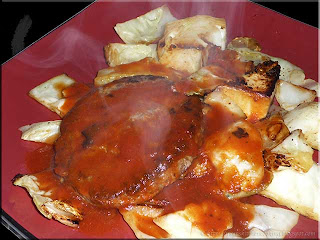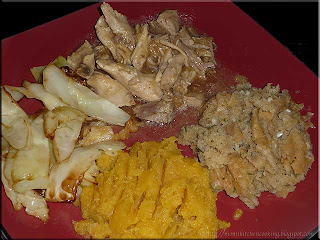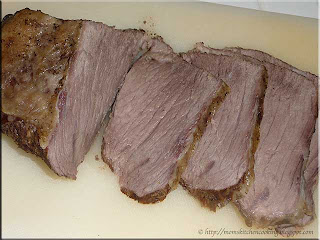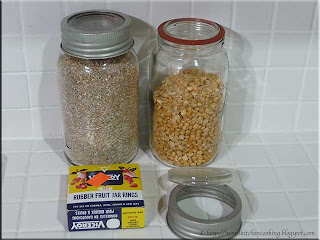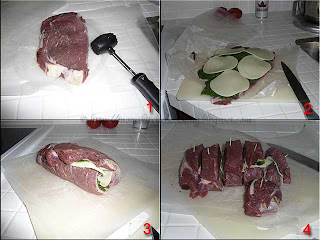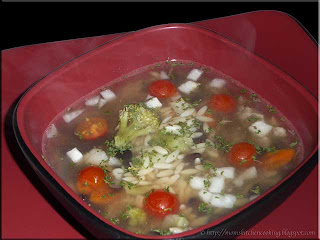The crockpot aka slow cooker has never been my favourite small kitchen appliance. The reason is I can get better results often cheaper using an alternative method. For example a slow cooker costs me about 8¢ per kWh but because it runs anywhere from 6 to 8 hours can cost as much as 64¢ for the same meal I can cook in a pressure cooker in 40 minutes for about 20¢. So in terms of electricity usage the slow cooker has never been the end all be all for me and since I'm usually home it isn't really a convenience appliance. As a result the slow cookers (I have 3) ended up being used mainly for bulk cooking sessions and entertaining but occasionally soups and stews. Well times are changing and with the new TOU electricity rates, I am reconsidering the slow cooker as another appliance to help save a little money in the kitchen.

I honestly never know whether to call it a crockpot or slow cooker. Clearly my old Rival was a crockpot. Crockpot is a trade name as far as I can tell whereas slow cooker refers to all appliances similar to a crockpot that do the same thing but can't use the trade name. Pictured is my old Rival and I do mean old. I was trying to figure out just how old this slow cooker is. I think it dates back to the mid 1980's. There is nothing fancy about it. The temperature settings of low, high and off. The crock is removable for easy cleaning a considerable improvement over my first crockpot where the crock was not removable. Circled is the patch job my husband did on the cord several years back. The cord came into contact with a hot burner baring the wires so my husband wrapped it with electrical tape.

With the onset of the rising electricity rates I started doing a bit of research. It helped to that in order to rent our vacation home out when we weren't there a slow cooker was mandatory. I started looking at slow cookers from a different perspective. A couple of weeks ago Canadian Tire had the Hamilton Beach programmable slow cooker with meat probe on sale for $39.99 (half price) so I finally decided to act. They were out of stock so gave a rain check for the sale price. My husband brought home the new slow cooker yesterday.
Now this is a gorgeous looking slow cooker with programmable features. Once the cooking time is finished it automatically switches to the
keep warm feature so food is not over cooked but hot, ready for serving. It also has to locking clips (hard to see but one under the right handle) for securing the lid tightly for travel. The crock is removable and there is a spoon rest in the lid handle. What I really like is unlike the Rival the lid is glass so there won't be any discolouration over time. Checking through Cook's Illustrated (Nov/Dec 2009) I found that this particular slow cooker performed well in their test and is recommended as their best buy. The sad thing is I likely paid a lot more for the Rival with less features than I paid for the new slow cooker.
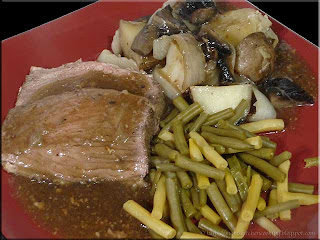
The first meal in the new slow cooker was tried and true, a meal that has been done in the oven, on the grill, in the countertop roaster and now the slow cooker. I thawed a rib roast so I could use the meat probe. I put the roast in the crock added a little water, seasonings, potatoes and onions then set the probe to the desired temperature (63ºC/145ºF). Both of us had our doubts because this was a nice looking roast that we knew would cook up nicely in the oven or countertop roaster.
My husband was sure that the roast would be cooked to well but instead the roast ended up being medium, just nicely pink on the inside. I served the roast with home canned green and wax beans, potatoes, onions and portabello mushrooms topped with a thin gravy. The meat was tender and flavourful, nicely done so I am impressed.
Had I cooked the roast in the oven it would have cost about $1.20. Cooking it in the countertop roaster would have cost about 90¢ and cooking it in the slow cooker cost about 20¢. Clearly in this case the slow cooker was the winner with respect to conserving electricity although the same meal cooked in a pressure cooker would have cost 16¢ in electricity. Now this is not always going to be the case especially when using the slow cooker during mid-peak and on-peak hours and the slow cooker will not give the same results as the oven or countertop roaster but so far it is looking rather impressive. Watch for a lot more slow cooker recipes as I do a bit of experimenting!












